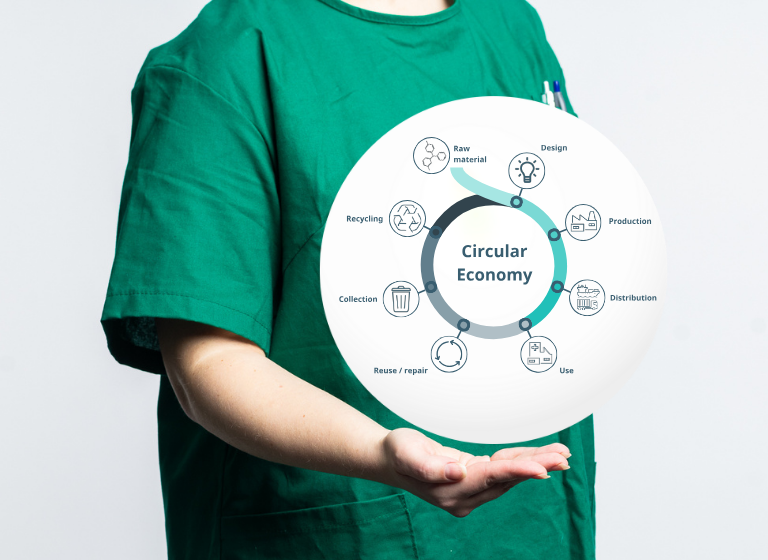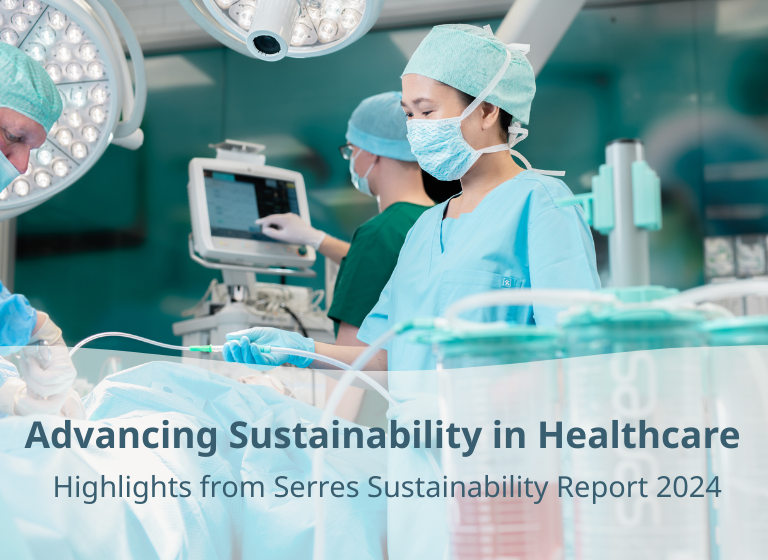Serres Nemo: Reducing the Amount of Operating Room Waste
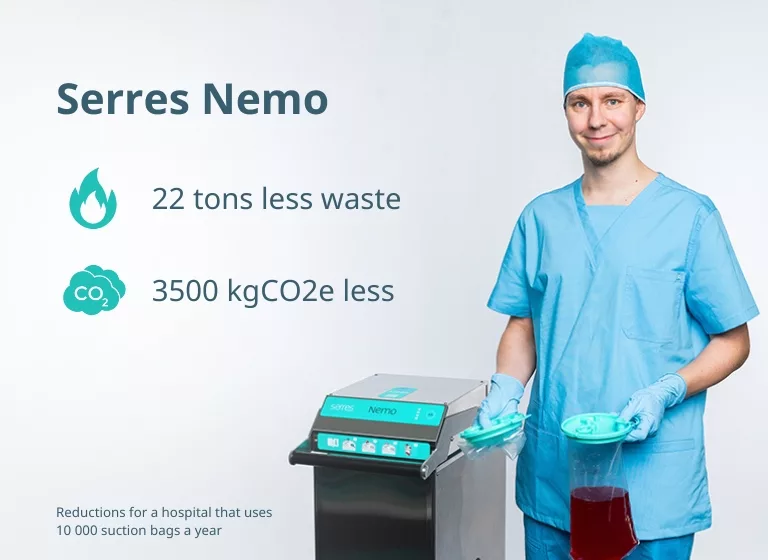
Hospital operating rooms generate a significant amount of waste: according to WHO the amount of waste varies between 0.2 to 0.5 kg of hazardous waste per hospital bed (1). Reducing the production of hazardous operating room waste is vital for hospitals aiming to lower their environmental footprint and realize significant cost savings through the adoption of more cost-effective disposal methods.
Serres Suction bags are used in the operating room to collect patient fluids during the procedure. These fluids may include irrigation fluids used to cleanse and visualize the surgical area, as well as the patient’s blood and other bodily fluids. This fluid is considered hazardous waste.
Several years ago, we at Serres undertook a mission to design a suction bag that uses much less materials than similar products. This endeavor has resulted not only in a more efficient product design but also efficient packaging – by using less plastics and optimizing packaging we have been able to fit up to 4 times more of our Serres Suction bags into the same space as comparable products (2).
A few years back our customers from several progressive hospitals started to reach out to us to find a solution that would reduce waste and make their fluid disposal process more sustainable.
Serres Nemo device limits the risk for the environment. It was also a way for us to think about the sustainable development in our hospital and taking concrete actions to limit the impact on the environment
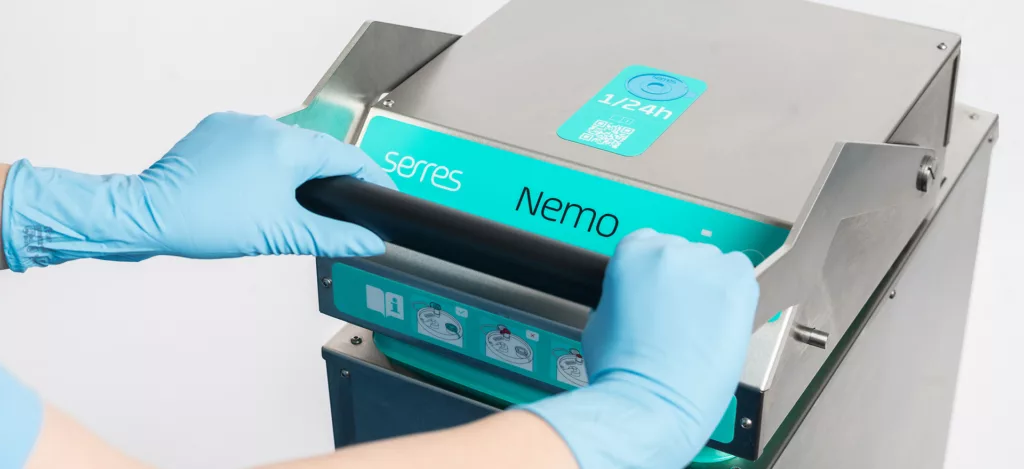
Serres Nemo – changing the name of the game
Our team investigated possibilities to reduce the amount of waste generated in the operating room and came up with an idea; instead of disposing and incinerating full suction bags, a solution could be designed to flush and empty the suction bag from the hazardous fluid content and then dispose only the empty suction bag. The idea of the Serres Suction bag emptying device “the Nemo”, became a reality: a surgical fluid disposal device that not only secures the emptying of the Serres Suction bag in a hygienic manner but at the same time significantly reduces the amount of waste and CO2e emissions generated in the process.
The result: up to 97% less waste generated and up to 97% less CO2e generated during the disposal phase/ waste transportation to incineration of the Serres Suction bag. The reduction in CO2e emissions isn’t merely environmentally impactful but also brings about substantial cost savings, addressing two critical facets of modern healthcare challenges.
Serres Nemo also disrupts the conventional approach by streamlining the fluid collection and disposal process, effectively mitigating the risk of contamination to healthcare professionals and reducing the overall process costs of fluid management.
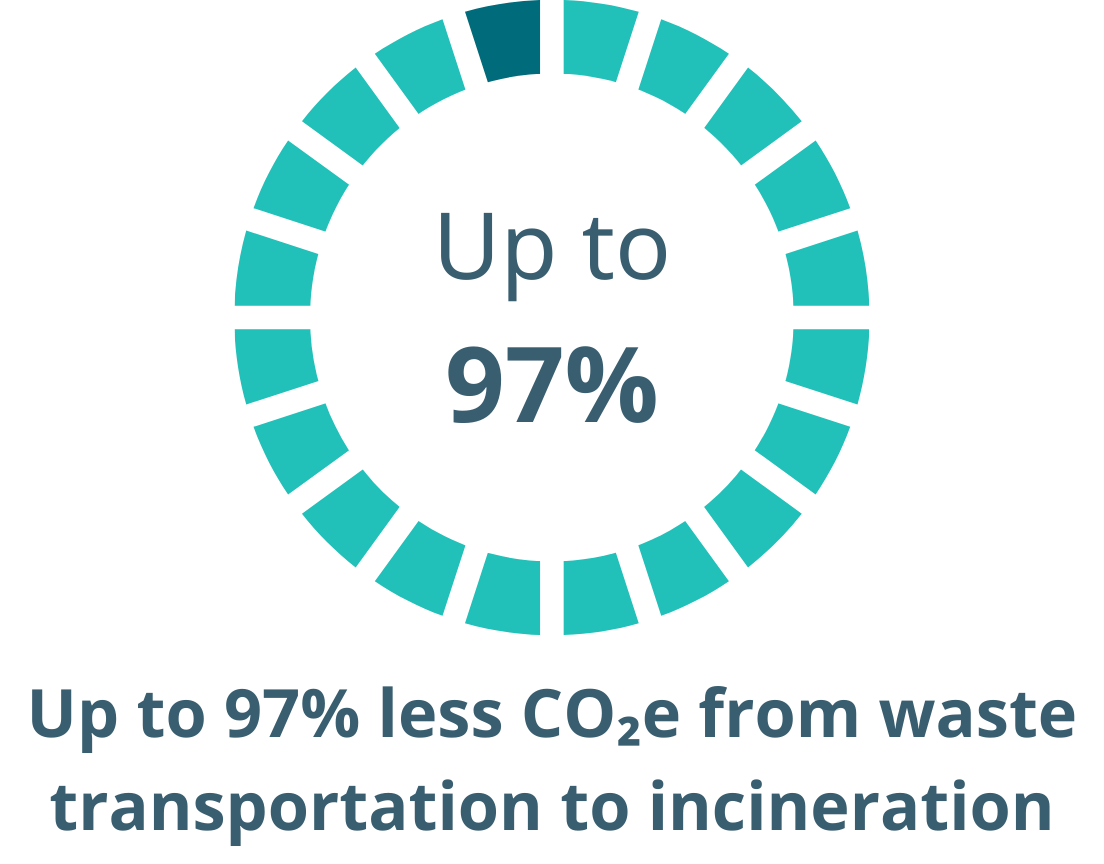
Beyond this, it addresses significant inefficiencies in the disposal of operating room waste. Specifically designed for secure on-site waste disposal, Serres Nemo provides an innovative alternative to the manual emptying of full suction bags into the sewer.
The system has been a good investment for the hospital – it saves both time and money. Our working environment is greatly improved, we are very pleased
Understanding our own footprint
Our team wanted to go even further in the Serres sustainability agenda. We began by calculating the entire carbon footprint of our Serres Suction bag to find out how we can continue to develop solutions for hospitals to reduce the CO2e emissions in the operating room.
In our case study, a meticulous cradle-to-grave methodology was employed for the carbon footprint calculation of the 2-liter Serres Suction bag, illuminating the profound impact of adopting the Serres Nemo approach. Traditional incineration scenario of a full suction bag carries a carbon footprint of 0.55 kg CO2e. With the assistance of Serres Nemo, this figure dramatically decreases to 0.20 kg CO2e, showcasing a potential reduction of up to 64% from the overall footprint and an astounding 97% reduction in the waste transportation to incineration.
Read more about the carbon footprint calculation of the Serres Suction bag in our blog post.
How to get started – how is Serres Nemo set up?
Serres Nemo has been designed with the users in mind to ease the fluid disposal workflow and reduce the amount of operating room waste. In a typical case, the Serres Nemo fluid disposal device is located in the hospital cleaning room that is easily accessible for the staff responsible for the patient fluid disposal from the operating room. The device requires connection to water and power supply – and then it’s ready to go.
Due to the compact size of the Serres Nemo device (330 x 515 x 1060 mm), the hospital staff can empty the Serres Suction Bags even in smaller facilities. The use of Serres Nemo is easy and efficient. With the wash cycle of only 15 seconds, emptying the suction bags with Serres Nemo saves significant amount of time, allowing the hospital staff to focus their time on what matters the most – the patient.
This is a very simple and flexible system. The process takes 15 seconds, then you open the lid, fold the bag, and throw it in the waste bin. We are really happy that it now happens so fast
(¹) Health-care waste (who.int)
(2) Packaging & logistics efficiency comparison is based on market analysis & study on number of similar-use products in 1 package & pallet efficiency in trucks and containers. Study was conducted in 2023.
